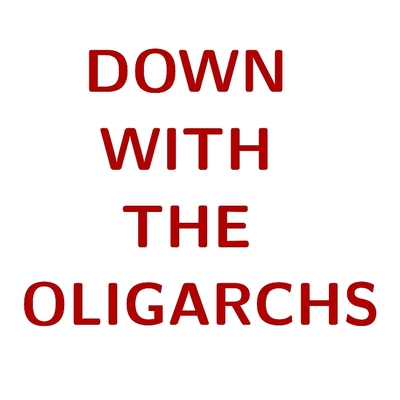-

@ John Carlos Baez
2025-02-15 22:42:54
nostr:nprofile1qy2hwumn8ghj7un9d3shjtnddaehgu3wwp6kyqpq0pdyzk3aarjhy48ahlg0uzwzpt46ps72z26eu28mghg22r0kq0jsuuky6l - indeed! From Wikipedia, here is "the so-called "Sun Dog Painting" (Vädersolstavlan) depicting Stockholm in 1535 and the celestial phenomenon at the time interpreted as an ominous presage."
"While mostly known and often quoted for being the oldest color depiction of the city of Stockholm, Vädersolstavlan (Swedish; "The Sundog Painting", literally "The Weather Sun Painting") is arguably also one of the oldest known depictions of a halo display, including a pair of sun dogs. For two hours in the morning of 20 April 1535, the skies over the city were filled with white circles and arcs crossing the sky, while additional suns (i.e., sun dogs) appeared around the sun. The phenomenon quickly resulted in rumours of an omen of God's forthcoming revenge on King Gustav Vasa (1496–1560) for having introduced Protestantism during the 1520s and for being heavy-handed with his enemies allied with the Danish king.
Hoping to end speculations, the Chancellor Olaus Petri (1493–1552), a Lutheran scholar, ordered a painting to be produced documenting the event. When confronted with the painting, the King, however, interpreted it as a conspiracy — the real sun, of course, being himself —threatened by competing fake suns, one being Olaus Petri and the other the clergyman and scholar Laurentius Andreae (1470–1552). Both were thus accused of treachery, but eventually escaped capital punishment. The original painting is lost, but a copy from the 1630s survives and can still be seen in the church Storkyrkan in central Stockholm."
https://en.wikipedia.org/wiki/Sun_dog#Early_modern_era
https://media.mathstodon.xyz/media_attachments/files/114/010/309/477/204/867/original/b2c8c1de2331ac2d.jpeg
 @ John Carlos Baez
2025-02-15 22:42:54nostr:nprofile1qy2hwumn8ghj7un9d3shjtnddaehgu3wwp6kyqpq0pdyzk3aarjhy48ahlg0uzwzpt46ps72z26eu28mghg22r0kq0jsuuky6l - indeed! From Wikipedia, here is "the so-called "Sun Dog Painting" (Vädersolstavlan) depicting Stockholm in 1535 and the celestial phenomenon at the time interpreted as an ominous presage." "While mostly known and often quoted for being the oldest color depiction of the city of Stockholm, Vädersolstavlan (Swedish; "The Sundog Painting", literally "The Weather Sun Painting") is arguably also one of the oldest known depictions of a halo display, including a pair of sun dogs. For two hours in the morning of 20 April 1535, the skies over the city were filled with white circles and arcs crossing the sky, while additional suns (i.e., sun dogs) appeared around the sun. The phenomenon quickly resulted in rumours of an omen of God's forthcoming revenge on King Gustav Vasa (1496–1560) for having introduced Protestantism during the 1520s and for being heavy-handed with his enemies allied with the Danish king. Hoping to end speculations, the Chancellor Olaus Petri (1493–1552), a Lutheran scholar, ordered a painting to be produced documenting the event. When confronted with the painting, the King, however, interpreted it as a conspiracy — the real sun, of course, being himself —threatened by competing fake suns, one being Olaus Petri and the other the clergyman and scholar Laurentius Andreae (1470–1552). Both were thus accused of treachery, but eventually escaped capital punishment. The original painting is lost, but a copy from the 1630s survives and can still be seen in the church Storkyrkan in central Stockholm." https://en.wikipedia.org/wiki/Sun_dog#Early_modern_era https://media.mathstodon.xyz/media_attachments/files/114/010/309/477/204/867/original/b2c8c1de2331ac2d.jpeg
@ John Carlos Baez
2025-02-15 22:42:54nostr:nprofile1qy2hwumn8ghj7un9d3shjtnddaehgu3wwp6kyqpq0pdyzk3aarjhy48ahlg0uzwzpt46ps72z26eu28mghg22r0kq0jsuuky6l - indeed! From Wikipedia, here is "the so-called "Sun Dog Painting" (Vädersolstavlan) depicting Stockholm in 1535 and the celestial phenomenon at the time interpreted as an ominous presage." "While mostly known and often quoted for being the oldest color depiction of the city of Stockholm, Vädersolstavlan (Swedish; "The Sundog Painting", literally "The Weather Sun Painting") is arguably also one of the oldest known depictions of a halo display, including a pair of sun dogs. For two hours in the morning of 20 April 1535, the skies over the city were filled with white circles and arcs crossing the sky, while additional suns (i.e., sun dogs) appeared around the sun. The phenomenon quickly resulted in rumours of an omen of God's forthcoming revenge on King Gustav Vasa (1496–1560) for having introduced Protestantism during the 1520s and for being heavy-handed with his enemies allied with the Danish king. Hoping to end speculations, the Chancellor Olaus Petri (1493–1552), a Lutheran scholar, ordered a painting to be produced documenting the event. When confronted with the painting, the King, however, interpreted it as a conspiracy — the real sun, of course, being himself —threatened by competing fake suns, one being Olaus Petri and the other the clergyman and scholar Laurentius Andreae (1470–1552). Both were thus accused of treachery, but eventually escaped capital punishment. The original painting is lost, but a copy from the 1630s survives and can still be seen in the church Storkyrkan in central Stockholm." https://en.wikipedia.org/wiki/Sun_dog#Early_modern_era https://media.mathstodon.xyz/media_attachments/files/114/010/309/477/204/867/original/b2c8c1de2331ac2d.jpeg